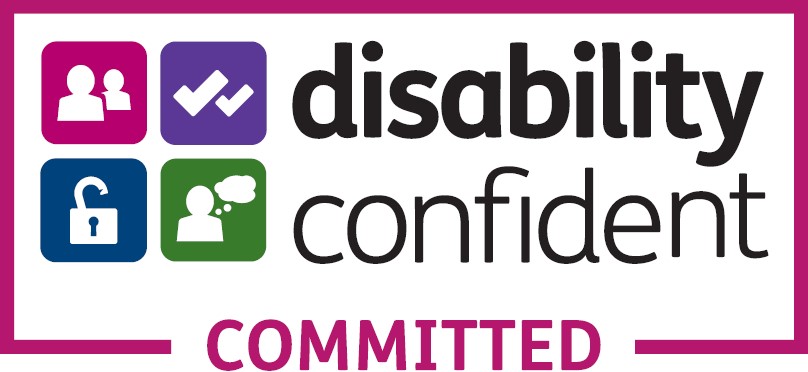The LSL Group and haysmacintyre have run a series of virtual roundtables with key decisionmakers in the professional institutes and membership bodies (PIMBs) sector discussing the impact of the pandemic over the last year, as well as the changes organisations have made and should consider. David Sneesby, Chief Executive of The LSL Group and Kathryn Burton, Partner and Head of PIMBs at haysmacintyre, round up some of the key takeaways from these gatherings.
In these challenging times, membership bodies, like all other organisations, have been forced to change due to the COVID-19 pandemic. In our recent discussion series, we considered some of the key areas that have been impacted including recruitment, flexible and agile working, governance and staff well-being. Here we share some of our thoughts and topics that arose during the discussion.
Opportunities in recruiting senior executives
The pandemic has not stopped recruitment. Contrary to initial concerns and thoughts, the pandemic has in fact been a good time to recruit, especially at a senior level. Even though senior candidates may not have been actively looking to move, those approached had been highly receptive and engaged in initial discussions about new opportunities. Many believe this receptiveness is due to potential candidates having quality time to reflect and research new roles, as well as the general view that the pandemic has led to many people stepping back and considering their future. In addition, the pandemic has forced employers to consider their priorities. For example, the importance of employee location. Greater flexibility across all aspects of working, not only opens up opportunities for a broader and more diverse candidate pool, but also is a key differentiator for an employer in what will become an increasingly competitive market for talent.
Quick statistics:
Research by the Institute of Leadership & Management found that the most sought-after employee benefits are now flexible working hours (47%), training paid for by the employer (36%) and flexible work location (32%).
The Chartered Institute of Personnel and Development reported that 56% of UK firms plan to hire staff in the next three months.
The Trajectory Partnership research showed that 23% of the UK working population expect to be working from home this time next year. This number rose to 32% for those earning over £62,000.
The overarching experience of those who led a senior leadership recruitment process during COVID-19 was that they had access to better candidates and that both the recruiters and candidates invested more time and energy in the process. Another advantage of the virtual environment was the ability to field a strong member and/or senior team for interview panels and facilitate greater involvement of key stakeholders in the process.
Flexible working
What is clear from the discussion amongst the professional bodies is that the pandemic has forced organisations to do things differently and they have adopted more flexible and agile ways of working. When lockdown restrictions end, it is expected that most organisations will not return to pre-COVID-19 working conditions. However, it was clear that many organisations at the early stages of deciding the future said there would not be a binary choice of office or home-working for employees, and they wanted to foster a work from anywhere culture. What is important is that the needs of all stakeholders; leaders and managers, staff, members and customers are taken into account when deciding how to reorganise post-pandemic.
Three areas to consider when looking at your flexible and agile working policy are:
Collaboration: how do we ensure that people still feel connected even if they are working remotely? Can we find practical ways to make interactions happen through repurposing large offices or creating local hubs where staff are scattered nationally and sometimes internationally?
Fairness: ensuring that everyone is treated the same no matter where they base themselves. Employers may need to reconsider their meeting practices, where their leaders are based and their remuneration and reward systems so that they meet the needs of flexible and remote working.
Role of leaders and managers: visibility, communication, reassurance and setting the tone for the organisation. Leaders and managers can find it difficult to manage teams remotely when they have not had to do it before, so providing support and helping them develop new skills will be required. Trust is key.
This is an opportunity for professional bodies to reinvent their workplace and consider the challenges that come with it: location, technology, working methods and people should all be taken into account with a view to better meet the needs of the business, staff, members and customers.
A poll by Gartner found that 48% of employees will likely work remotely for at least part of the time post-pandemic (up from 30% pre-pandemic).
Governance
A global pandemic is a governance crisis and provides the challenge of ensuring effective governance, while also ensuring effective membership engagement. The natural inclination is for more governance – everybody scrutinises everything – but senior management need time and space to be proactive and fix the issues. In a time of crisis and change, governance needs to focus on prioritisation: what are the key issues to be addressed?
The outcome of the pandemic is more agile and flexible governance with Councils/Boards only looking at the things that really matter, allowing the executive ’to get on and do their job‘. The introduction of technology has changed the way of meetings for now, but there is concern that as soon as lockdown restrictions end, the ’old ways‘ will return and professional bodies will go back to all day face-to-face meetings – reversing the many cost savings and efficiencies reaped during 2020 and 2021.
The pandemic has seen a move to push through changes, with many institutes undertaking reviews of their governance and articles, and considering streamlining governance processes. Technology certainly allows for some decisions to be made quickly, proactively and effectively.
We’d encourage senior leadership to ensure some of the best technological developments or accommodations are not wholesale abandoned once in-person gathering is allowed; it will save your organisation money and perhaps make it more dynamic in the long run.
Staff wellbeing
People are at the heart of every professional body and now more than ever is the time to support members and employees.
Employees are looking to their employers to be their psychological safety net and to put health, safety and wellness at the top of their agenda. Mental health is an issue of growing significance, with new expectations developing on both sides. Employers will need to be agile and adaptable. What works for one person or group may not work for others. Many organisations are already introducing mental health first aiders for staff to turn to.
Now is the time to consider including flexible health and wellbeing choices into ways of working and rewards. Companies will need to change HR policy and practice – performance management will have to change if working from home becomes commonplace. Companies will also need to take unilateral action to balance the use of technology with providing headspace and thinking time and acknowledge that more agile working can lead to less interaction. How do you strike the right balance?
For some, there has been a drop in staff engagement after a full year of remote working. Leaders and managers will need to be trained on how to lead and manage remotely and over technology to change the course of this trend. Questions will need answering: how do you ensure staff interact? How do you manage with some people in the office and others at home? Engaging staff in a variety of ways will be important: buddying systems, home support networks, projects on well-being, meeting-free Fridays or email-free Fridays are all possible solutions, as is maintaining engagement through regular pulse surveys. Another solution to engagement concerns is to provide flexible benefits aligned to health and wellness outcomes allowing people to ‘pick and mix’ from a variety of offers that suit them; some might spend their benefit on commuting costs, others on home office equipment and others on fitness trackers. This may even end up replacing traditional bonuses.
Companies will need to deal with the fact that as humans we are wired to connect. We are designed for sociability. The question is, can we find this sociability in our ‘new normal’? Now more than ever, organisations need leaders and managers who can demonstrate commitment to this new psychological contract. Which also raises the question of how we make sure we look after our leaders and managers – because they need to do this, on top of managing their own ‘new normal’.
Conclusion
Keeping pace with change is about breaking habits: the pandemic has shown us that when we have little choice, we do rise to the challenge. As a sector, we were thrown into the new way of working, and we don’t want to be thrown out of it. We can plan: now is the time to try new things, experiment and adapt. Rather than try and analyse the perfect answer now, stay flexible. Above all, don’t forget your members. What impact has the pandemic had on the members, and what support do they need? The pandemic has allowed professional bodies to take the lead, have more input in government policy, increasing the profile of members, so don’t stop this good work! Consider the implications of big changes on your membership such as space requirements and how members use your buildings. Now is the time to reach out to members, understand their needs and ensure the professional body has a sustainable and bright future.


